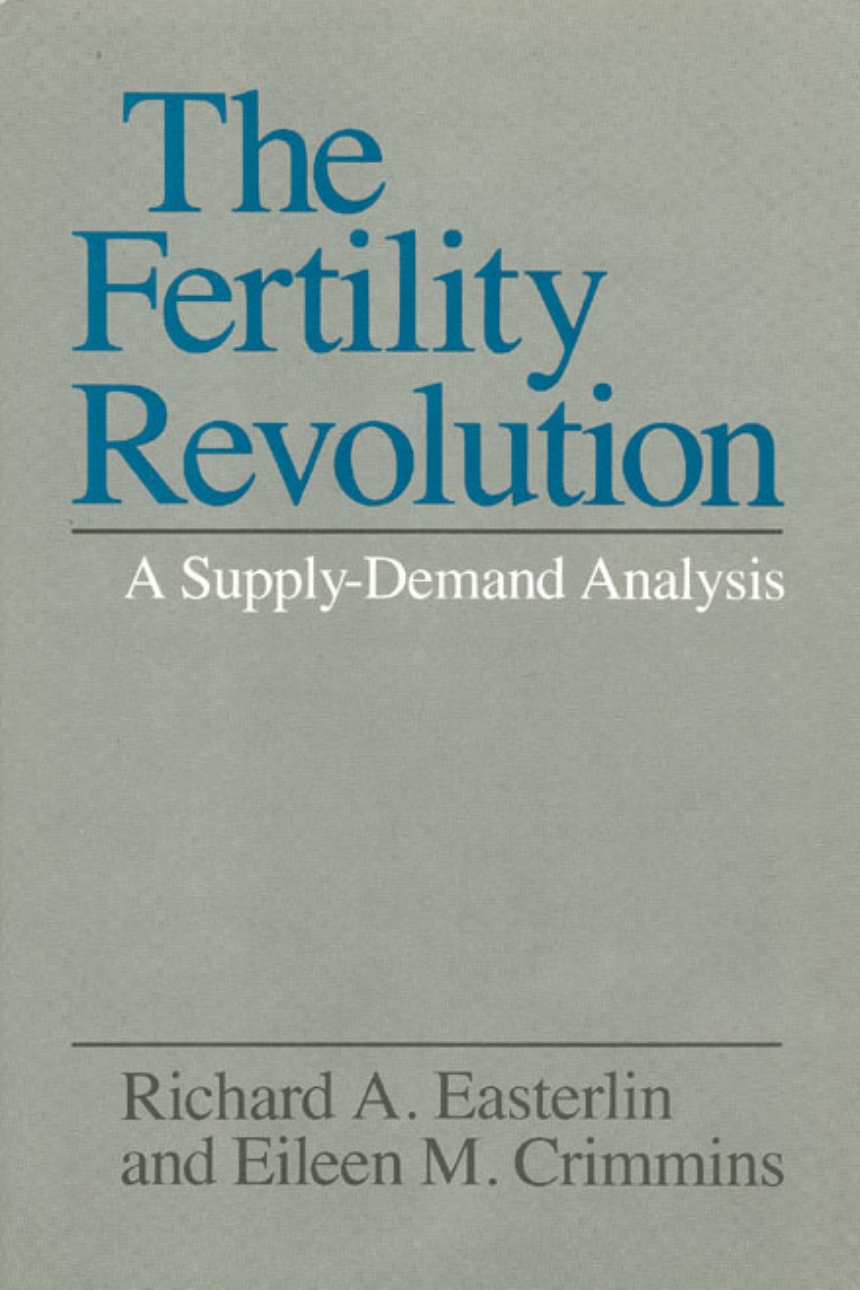The Fertility Revolution
A Supply-Demand Analysis
For most of human history a "natural fertility" regime has prevailed throughout the world: there has been almost no conscious limitation of family size within marriage, and women have spent their reproductive lives tied to the "wheel of childbearing." Only recently in developed countries has fertility been brought under conscious control by individual couples and childbearing fallen to an average of two births per woman. The explanation of this "fertility revolution" is the main concern of this book.
Richard A. Easterlin and Eileen M. Crimmins present and test a fertility theory that has gained increasing attention over the last decade, a "supply-demand theory" that integrates economic and sociological approaches to fertility determination. The results of the tests, which draw on data from four developing countries—Colombia, India, Sri Lanka, and Taiwan—are highly consistent, though a number of the conclusions are likely to arouse controversy. For example, couples’ motivation for fertility control appears to be the prime mover in the fertility revolution, rather than access to family planning services or unfavorable attitudes toward such services.
The interdisciplinary approach and nontechnical exposition of this study will attract a wide readership among economists, sociologists, demographers, anthropologists, statisticians, biologists, and others.
Richard A. Easterlin and Eileen M. Crimmins present and test a fertility theory that has gained increasing attention over the last decade, a "supply-demand theory" that integrates economic and sociological approaches to fertility determination. The results of the tests, which draw on data from four developing countries—Colombia, India, Sri Lanka, and Taiwan—are highly consistent, though a number of the conclusions are likely to arouse controversy. For example, couples’ motivation for fertility control appears to be the prime mover in the fertility revolution, rather than access to family planning services or unfavorable attitudes toward such services.
The interdisciplinary approach and nontechnical exposition of this study will attract a wide readership among economists, sociologists, demographers, anthropologists, statisticians, biologists, and others.
230 pages | 6.00 x 9.00 | © 1985
Economics and Business: Economics--Development, Growth, Planning
Sociology: Demography and Human Ecology
Table of Contents
List of Figures
List of Tables
Preface
I. The Problem and Approach
1. The Fertility Revolution
2. Theoretical Framework
II. Micro-Level Analysis of Sri Lanka and Colombia
3. Model, Methodology, and Measurement
4. Empirical Results and Tests
III. Macro Studies
5. The Historical Experience of Karnataka and Taiwan
With K. Srinivasan and Shireen J. Jejeebhoy
6. A Cross-Sectional Analysis of Ten Indian States
With K. Srinivasan and Shireen J. Jejeebhoy
IV. Conclusion
7. Summary and Implications
Bibliography
Name Index
Subject Index
List of Tables
Preface
I. The Problem and Approach
1. The Fertility Revolution
2. Theoretical Framework
II. Micro-Level Analysis of Sri Lanka and Colombia
3. Model, Methodology, and Measurement
4. Empirical Results and Tests
III. Macro Studies
5. The Historical Experience of Karnataka and Taiwan
With K. Srinivasan and Shireen J. Jejeebhoy
6. A Cross-Sectional Analysis of Ten Indian States
With K. Srinivasan and Shireen J. Jejeebhoy
IV. Conclusion
7. Summary and Implications
Bibliography
Name Index
Subject Index
